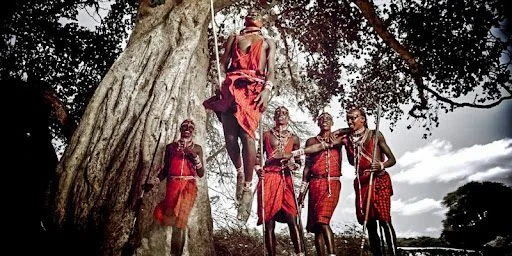Deep within the Omo Valley of southern Ethiopia, the Mursi tribe lives a life that has fascinated and bewildered outsiders for centuries. Isolated from much of the modern world, the Mursi have managed to hold on to their customs and traditions, some of which are considered shocking by the outside world. Among their most distinct and widely recognized practices is the insertion of lip plates, especially worn by women, which remains a powerful cultural symbol. While to many outsiders, this tradition may appear extreme or even painful, for the Mursi people, it is a proud expression of beauty, status, and identity. This article explores the origins, significance, and challenges surrounding this ancient tradition.
The Lip Plate Tradition: A Mark of Beauty and Status
The lip plate, or “dhebi a tugoin” in the Mursi language, is arguably the most defining feature of the Mursi women. This cultural practice involves cutting a woman’s lower lip and gradually stretching it to accommodate a large clay or wooden plate. Girls typically undergo this process during their teenage years, usually between 15 and 18 years old, marking their transition into adulthood.
To outsiders, the sight of a woman with a large disc protruding from her lower lip can be shocking, but for the Mursi, it is a symbol of beauty and status. The larger the plate, the more beautiful and respected the woman is considered within her community. It is believed to signify strength, endurance, and readiness for marriage. The size of the lip plate can also play a role in marriage negotiations, with larger plates potentially leading to a higher bride price in the form of cattle.
Origins and Significance: A Symbol of Resistance?
The exact origins of the lip plate tradition among the Mursi are unclear, though there are several theories. Some anthropologists believe that the practice began as a form of resistance against slavery during colonial times. By disfiguring themselves with lip plates, Mursi women were believed to make themselves less attractive to slave traders, thus avoiding capture. However, this theory remains speculative, and many Mursi people today view the lip plate purely as a cultural tradition.
Regardless of its origin, the lip plate has evolved into a deeply ingrained part of Mursi identity. It is more than just a marker of beauty; it is a rite of passage that connects Mursi women to their ancestors and cultural heritage. Wearing a lip plate is an expression of pride and belonging, a visible marker of one’s place within the tribe.
The Process: Pain, Patience, and Commitment
The process of getting a lip plate is not for the faint-hearted. It begins with a small incision made in the lower lip, which is then stretched over time using progressively larger plates. This process can take several months or even years, depending on how large the woman wishes her lip plate to be. The plates are typically made of clay or wood and are often decorated with intricate patterns.
While the procedure may seem painful to outsiders, Mursi women take great pride in it, seeing it as a testament to their strength and resilience. The process requires both patience and commitment, as women must endure significant discomfort to achieve the desired result. Once the lip is fully stretched, the plate can be removed or inserted at will, depending on the occasion.
A Changing Tradition: Modern Pressures and Choices
In recent years, the lip plate tradition has come under increasing scrutiny from the outside world. Western tourists and media often view the practice through a lens of exoticism or even horror, labeling it as primitive or barbaric. This perception has put pressure on younger generations of Mursi women, some of whom are beginning to question whether the practice still holds relevance in a rapidly modernizing world.
Additionally, increased contact with the outside world has brought new economic opportunities to the Mursi people. Tourism, in particular, has created a demand for Mursi women to display their lip plates for photographers and tourists willing to pay for a glimpse into their world. While this has provided much-needed income for the tribe, it has also commercialized what was once a deeply personal and sacred tradition.
As a result, some younger Mursi women are choosing not to get lip plates, instead opting for more modern lifestyles and education. For many, the lip plate tradition is seen as incompatible with the opportunities and freedoms available in the outside world. However, others remain committed to preserving their cultural heritage, seeing the lip plate as a vital link to their ancestors and a symbol of pride.
The Broader Cultural Context: The Role of Women in Mursi Society
The lip plate tradition cannot be understood in isolation from the broader cultural context of the Mursi people. Women play a central role in Mursi society, not only as mothers and wives but also as guardians of the tribe’s cultural practices. In addition to wearing lip plates, Mursi women are responsible for many of the day-to-day tasks that keep the community functioning, including gathering food, fetching water, and caring for children.
Despite the physically demanding nature of their lives, Mursi women are revered for their strength and resilience. The lip plate, far from being a symbol of oppression, is seen as an expression of this strength—a visible marker of their ability to endure pain and hardship. In a culture where survival is often a challenge, the lip plate serves as a reminder of the importance of resilience and determination.
Conclusion: A Tradition at a Crossroads
The Mursi people of Ethiopia stand at a cultural crossroads, with their ancient lip plate tradition facing increasing pressure from the modern world. While some younger women are choosing to forgo the practice, many continue to embrace it as a proud expression of beauty, identity, and strength. For the Mursi, the lip plate is more than just a physical adornment; it is a vital link to their past and a testament to their enduring cultural heritage. As the tribe navigates the challenges of modernization, the future of the lip plate tradition remains uncertain, but its significance in Murs























